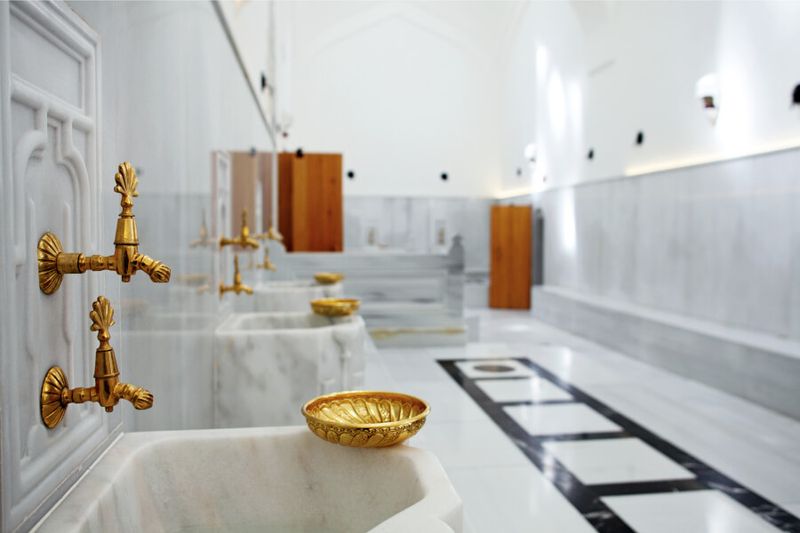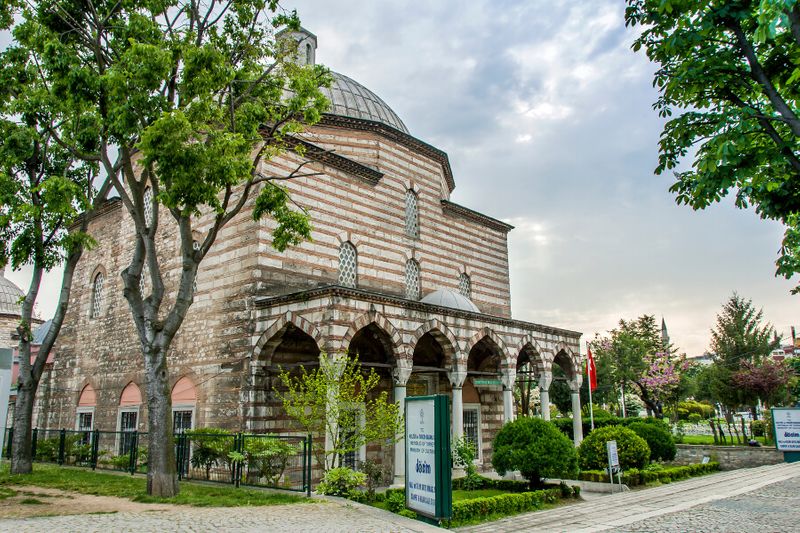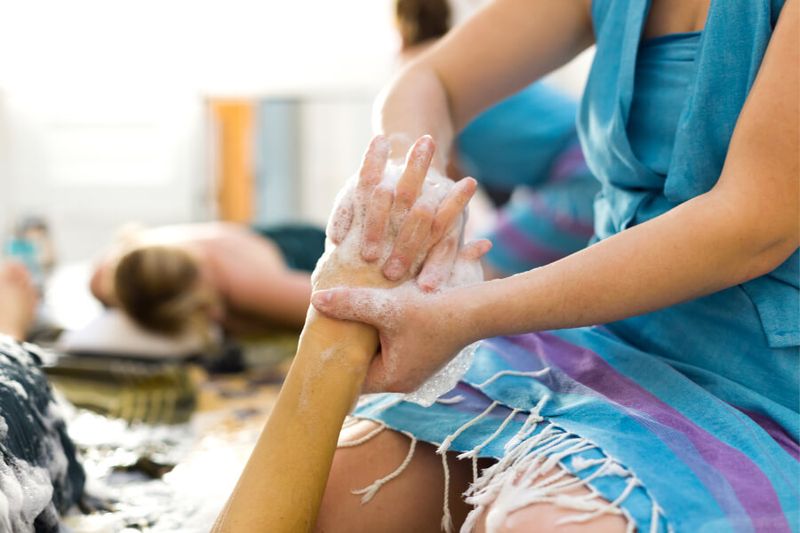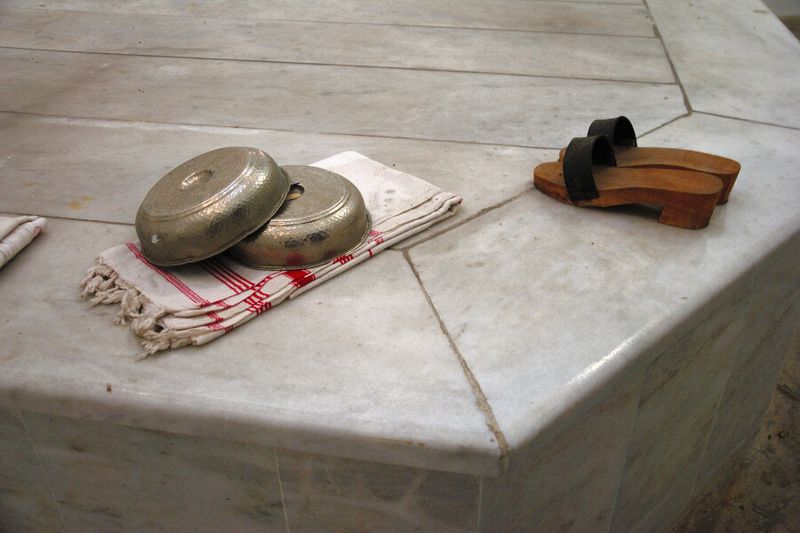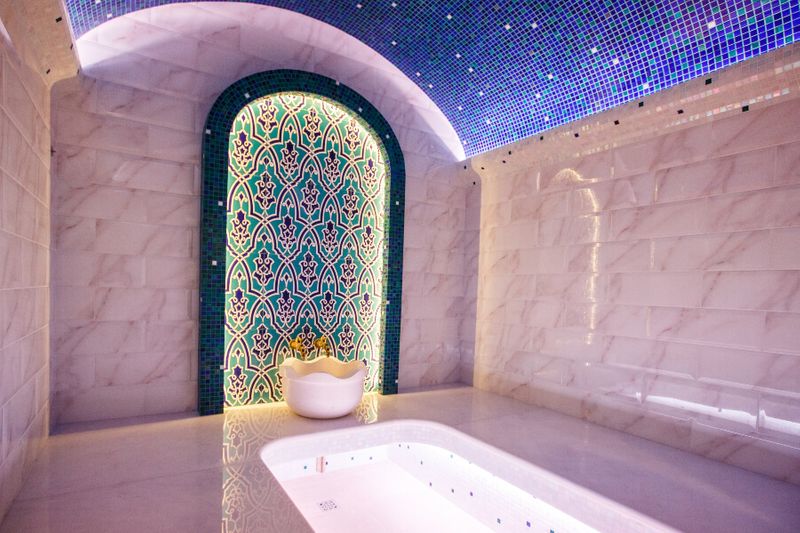Few cultural experiences remain as close to their authentic roots as a Turkish hamam. Known globally as a Turkish steam bath, this centuries-old tradition traces back to the time of the Roman Empire and was adopted and adapted by the Ottomans after they conquered Constantinople (now Istanbul) in 1453. With roots in both religious observance and communal rituals, the hamam in Turkey has evolved into a powerful symbol of cleansing, hospitality, and relaxation.
If it’s your first time stepping into a Turkish hamam, expect a bit of mystery, a lot of steam, and a deep clean like no other.
What is a hamam?
A Turkish hamam is a type of public bathhouse that combines the steam and heat of a sauna with cleansing rituals involving scrubbing, massage, and soaking. The experience involves a sequence of heated rooms, professional exfoliation using a coarse mitt called a kese, foam massage, and deep relaxation.
While similar in some ways to saunas and Roman baths, the hamam vs sauna difference is clear: a Turkish bath emphasises cleansing and massage over just sweating, with a sequence of treatments focused on purification and physical renewal.
Think of it as equal parts ritual and self-care, a full reset button for both body and brain.
The history of the Turkish bath
According to Berkay Akarsu of Hagia Sophia Sultan Hamam Bath, at the height of the Ottoman Empire, “every neighbourhood of Istanbul had a hamam with hot and cold baths, fountains and domed marble rooms.”
Hamams were built near mosques to facilitate religious cleansing. The traditional Turkish bath served not only hygienic but also social and ceremonial purposes, such as preparing brides for their wedding day, celebrating newborns, and marking other life milestones.
Back then, a trip to the hamam wasn’t just a weekly wash, it was a ritual. Women would gather to gossip and pamper, men would come to talk politics or close business deals, and everyone would leave feeling cleaner, softer, and a little more connected.
Where to try a Turkish hamam
- Hagia Sophia Hurrem Sultan Hamam: Commissioned by Roxelana and completed in 1556 by master architect Mimar Sinan for Sultan Suleiman’s wife. It’s centrally located between the Hagia Sophia and Blue Mosque.
- Çemberlitaş Hamamı: Dating back to 1584, this historic hamam is one of the city’s most famous.
- Kılıç Ali Paşa Hamamı: A luxurious and elegant hamam designed by Mimar Sinan in the Karaköy district, built to serve Ottoman navy mariners in 1578 –1580.
Some of the best-known and most beautiful Istanbul hamams include:
- Hagia Sophia Hurrem Sultan Hamam: commissioned by Roxelana and finished in 1556 by master architect Mimar Sinan; perfectly placed between Hagia Sophia and the Blue Mosque.
- Çemberlitaş Hamamı: Another Sinan creation (1584), prized for its soaring dome and central location on Divanyolu Street.
- Kılıç Ali Paşa Hamamı: Sinan-designed (1578-1580) to serve Ottoman mariners; now fully restored and famed for its cloud-bubble massage.
Turkish hamams aren’t limited to just Istanbul. If you're travelling on one of our Inspiring Vacations small group tours, you'll encounter bathhouses in several regional gems:
- Pamukkale: After soaking in the travertine terraces, unwind with a local hamam experience featuring thermal water treatments.
- Cappadocia: Some cave hotels offer hamams carved directly into the rock, giving a unique spin to this ancient tradition.
- Ayvalik: Visit Afrodit Hamami, a rustic bathhouse steeped in history and still popular with locals.
These regional options tend to be less polished than their Istanbul counterparts but offer a more intimate and often more traditional feel.
Tips for choosing your hamam experience:
- Tourist-friendly hamams: English-speaking, co-ed or gender-alternating times, luxury services (e.g. Hurrem Sultan Hamam)
- Local hamams: Less expensive, usually gender-segregated, often simpler and more authentic
- Hotel hamams: Private, spa-like environments ideal for those wanting privacy or customised treatments
What happens in a hamam?
The hamam experience typically includes three main areas: the warm room, hot room, and cool room. Here’s a breakdown of what to expect in a Turkish hamam.
It’s not just about what happens physically. This is a full sensory experience. The moment you enter, the scent of warm marble and olive oil soap hits you. Your skin softens, your muscles loosen, and the world outside fades away. Emotionally, it can feel slightly strange at first, especially if you’re shy or unsure about what’s coming. But most travellers say that awkwardness disappears quickly. What replaces it is a deep sense of calm, clarity, and unexpected joy. It’s easy to see why hamams have been part of Turkish life for centuries.
Step 1: The warm room
This is where you begin your visit. Your body gradually adjusts to the temperature, and your pores begin to open. You’ll sweat gently, helping release toxins. After 10–15 minutes, an attendant will begin exfoliating your skin using a rough mitt (kese). Layers of dead skin are scrubbed away, leaving you feeling brand new.
Expect to be amazed, and maybe surprised by just how much skin you shed.
Step 2: The hot room
Now thoroughly exfoliated, you move to the hot room, where the temperature is slightly higher. You lie on a central, heated marble slab known as the göbektaşı, surrounded by private alcoves (halvet). Here, attendants lather your entire body with rich, soapy bubbles and perform a full-body massage. It’s deeply relaxing and often the highlight of the Turkish spa experience.
The bubbles are whipped up from special olive oil soap in a cloth sack. It’s like being tucked inside a warm cloud. If you weren’t already in holiday mode, this is the point where your shoulders drop and you stop checking your phone.
Step 3: The cool room
Finally, you move to a cool area where you can unwind, rehydrate, and sip tea or sherbet. You can also opt for extra treatments such as a clay face mask, aromatherapy massage, or oil-based foot rub.
By the time you leave, your skin will glow, your body will hum, and you’ll wonder why you didn’t do this on day one.
Hamam etiquette and dress code
First-timers often ask: Do you wear clothes in a Turkish hamam? You’ll be given disposable underwear, a towel called a peshtemal, and wooden clogs. During the wash and massage, the peshtemal is often removed or adjusted by the attendant. If you're modest, wearing a bikini or swimsuit is perfectly acceptable. It’s also a good idea to bring a change of dry underwear.
Hamam etiquette also includes:
- Showering before entering the steam rooms
- Speaking quietly to maintain a peaceful environment
- Tipping your attendant (usually 10–20%)
Most importantly, give yourself permission to relax. Stepping onto warm marble in just a peshtemal can feel unfamiliar at first, yet that self-consciousness soon drifts away in the steam. Within minutes, you’ll notice that every guest is quietly enjoying the same soothing ritual, and the attendants are there to guide you every step of the way.
How to prepare for a hamam in Turkey
Wondering how to prepare for a hamam in Turkey? Here’s what to keep in mind:
- Avoid heavy meals beforehand
- Hydrate before and after your session
- Leave jewellery in your locker
- Bring flip-flops and a change of clothes if not provided
It’s also wise to arrive 15–20 minutes early to settle in before your treatment begins. Some hamams offer tea or water while you wait, a nice little touch that helps ease first-time nerves.
Traditional steps in a Turkish hamam ritual
The ritual is structured and time-honoured. These are the traditional steps in a Turkish hamam ritual:
- Warming up: Begin with a slow sweat session in a warm or steam-filled room.
- Scrubbing: An attendant uses a kese mitt to exfoliate the skin.
- Foam massage: Fluffy soap suds are massaged over the body.
- Rinsing: Warm water is poured over the body using a bowl or ladle.
- Optional treatments: Aromatherapy oil massage, clay mask, foot rubs.
- Cooling down: You rest and rehydrate in the lounge or cool room.
The whole thing can take anywhere from 45 minutes to two hours, depending on how many extras you opt for. If you have time, go for the full ritual. You won’t regret it.
Benefits of a hamam
So, is a Turkish bath good for your health? Absolutely. Here are some commonly cited benefits of hamam experiences:
- Deep skin cleansing and exfoliation
- Muscle relaxation and tension relief
- Improved circulation and detoxification
- Boosted immune function
- Stress reduction and improved sleep
- A much-needed reset for both body and mind
Travelling is exciting, but it’s also tiring. Long-haul flights, new time zones, walking tours, and heavy meals can leave you feeling sluggish. A hamam can cut through all that and leave you feeling human again.
Hamam vs sauna: What's the difference?
When comparing a hamam vs sauna, the main differences are:
- Environment: Hamams are wet and steamy; saunas are dry.
- Treatment: Saunas are self-guided; hamams involve attendants and rituals.
- Focus: Hamams prioritise scrubbing and cleansing; saunas emphasise sweating.
In short, a Turkish bathhouse is more hands-on, more ritualistic, and arguably more rewarding than a simple sweat session in a wooden box.
Tips for your first Turkish bath experience
Here are some final tips for your first Turkish bath experience:
- Choose a hamam with good reviews and English-speaking staff
- Communicate if you feel discomfort at any stage
- Drink plenty of water afterwards
- Expect to be scrubbed vigorously, it’s part of the charm!
- Go early in your trip to start your holiday feeling refreshed
- Don’t schedule anything strenuous afterwards, you’ll be too relaxed to care
A cultural experience worth booking
The first Turkish hamam can feel intimidating, but it quickly becomes one of the most memorable parts of travelling in Turkey. From the moment you step into a marble chamber beneath a domed ceiling to the final sip of sherbet in the cool room, it’s an experience that lingers long after your skin has stopped tingling.
So next time you're exploring Istanbul or any historic city, consider adding a hamam to your plans. You’ll find opportunities to visit traditional bathhouses across the country on many of our curated Turkey tours.
Looking for inspiration? Our 19 Day Highlights of Turkey Premium Small Group tour includes ample downtime to try a hamam in places like Pamukkale or Istanbul, while the 15 Day Incredible Turkey & Greece Premium Small Group tour blends cultural sightseeing with the chance to unwind in a classic Turkish bath.
Book a Turkish hamam in advance in Istanbul to make sure you don’t miss out. It’s the kind of experience that leaves you scrubbed, softened, and deeply relaxed—a perfect travel reset.

